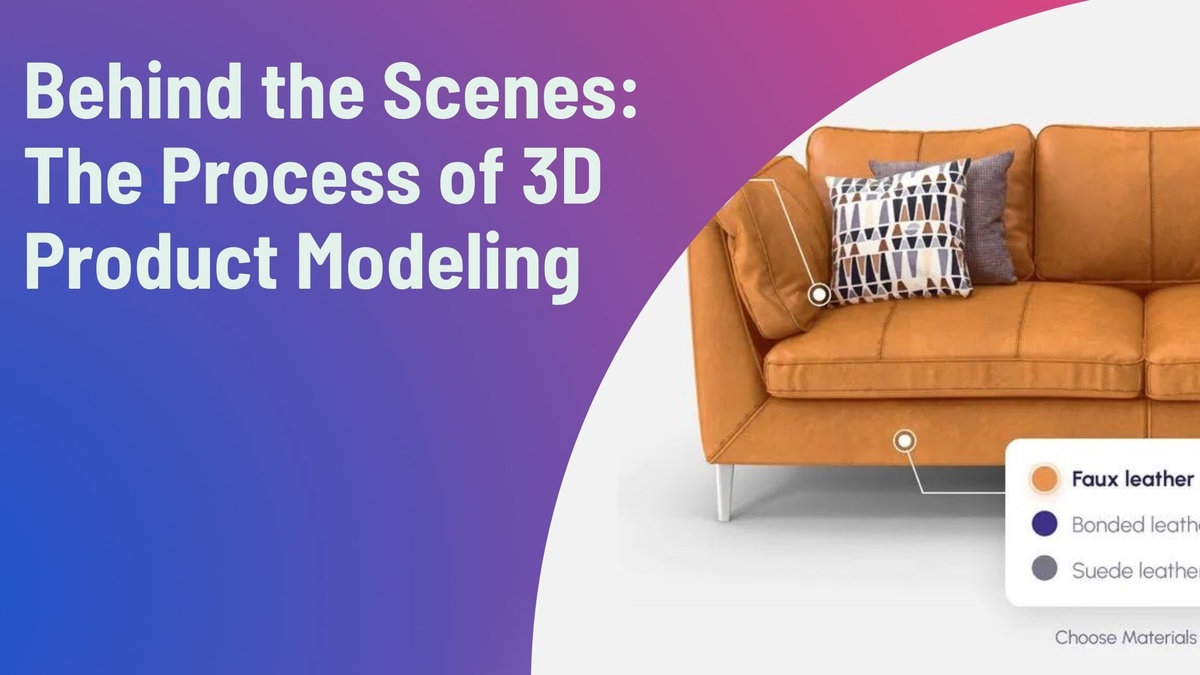Introduction:
In the realm of product design and marketing, 3D product modeling services have become indispensable. These services offer a pathway to bring products to life digitally, allowing for visualization, analysis, and presentation like never before. In this blog, we'll unveil the intricate process behind 3D product modeling, shedding light on the steps involved and the significance it holds in various industries.
Understanding 3D Product Modeling:
Before we embark on the journey of uncovering the process, let's grasp the essence of 3D product modeling. It's the art of crafting digital representations of physical products using advanced software tools and techniques. These models are intricate, accurate, and dynamic, serving as virtual prototypes that facilitate design iterations and marketing endeavors.
The Process of 3D Product Modeling:
The journey of 3D product modeling is a multi-faceted one, comprising several key stages. Here's a glimpse into the behind-the-scenes process:
Conceptualization and Research:
The process kicks off with conceptualization and research. Understanding the product's purpose, target audience, and unique features is paramount. This stage involves gathering reference materials, such as sketches, blueprints, and specifications, to lay the foundation for the modeling process.
Initial Sketches and Wireframes:
Armed with insights from the research phase, the next step involves translating ideas into digital sketches and wireframes. This stage serves as a blueprint, outlining the basic structure and proportions of the product. It's a critical phase where design decisions are made and refined before diving deeper into the modeling process.
3D Modeling:
With the blueprint in hand, it's time to breathe life into the digital realm. Using specialized 3D modeling software, artists meticulously sculpt the product in three dimensions. This involves shaping the geometry, defining surfaces, and adding details to achieve a faithful representation of the physical object. Precision and attention to detail are paramount at this stage to ensure accuracy and realism.
Texturing and Materials:
Once the basic geometry is in place, textures and materials are applied to the model to enhance its visual appeal. This involves simulating various surface properties, such as glossiness, roughness, and reflectivity, to mimic real-world materials like metal, plastic, or fabric. The choice of textures and materials plays a crucial role in defining the product's aesthetics and character.
Lighting and Rendering:
To breathe life into the model, lighting is meticulously crafted to illuminate the scene realistically. Shadows, highlights, and reflections are carefully calibrated to evoke a sense of depth and atmosphere. Finally, the model is rendered into high-resolution images or animations, ready to be showcased to clients, stakeholders, or consumers.
Feedback and Iteration:
Feedback is sought from stakeholders, clients, or design teams to evaluate the model and identify areas for improvement. Iterative refinement is a key aspect of the process, with adjustments made based on feedback to enhance the model's quality and alignment with project goals.
Importance of 3D Product Modeling Services:
The significance of 3D product modeling services extends across various industries:
Design Validation: Virtual prototypes allow designers to validate concepts, test functionality, and identify potential design flaws before physical production, saving time and resources.
Marketing and Visualization: Photorealistic renders and animations serve as powerful marketing tools, enabling businesses to showcase products in vivid detail and engage consumers effectively.
Customization and Personalization: 3D modeling facilitates customization and personalization, allowing products to be tailored to individual preferences and market demands.
Cost Savings: By reducing the need for physical prototypes and streamlining the design process, 3D product modeling services offer significant cost savings for businesses.
Conclusion:
Behind every captivating product render or animation lies a meticulous process of 3D product modeling. From conceptualization to rendering, each stage contributes to the creation of immersive and compelling digital representations of physical products. As technology continues to evolve, 3D product modeling services will play an increasingly integral role in shaping the future of design, manufacturing, and marketing.


No comments yet